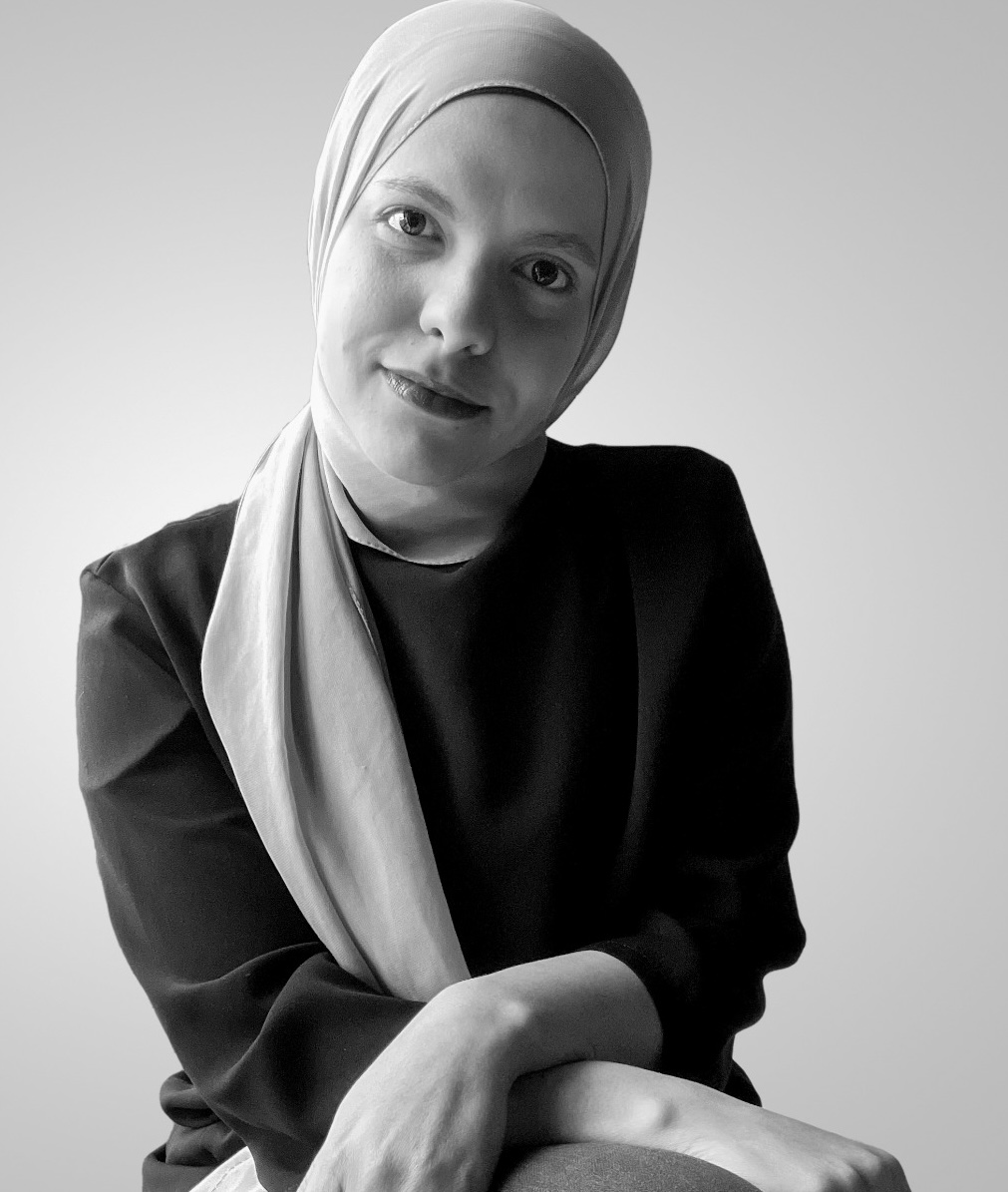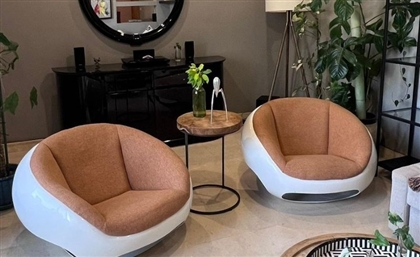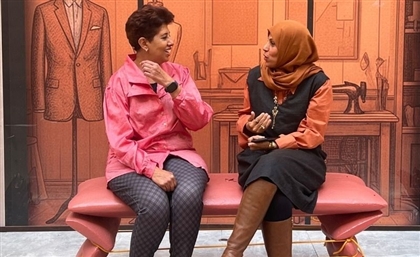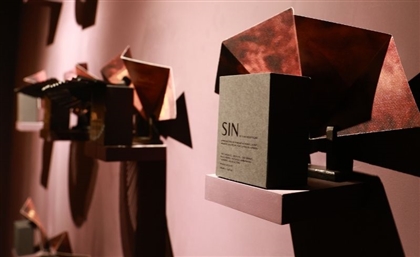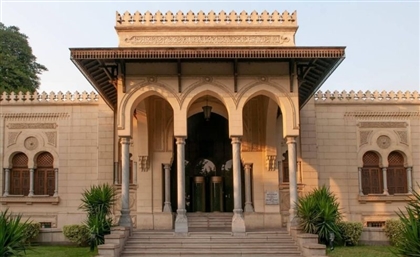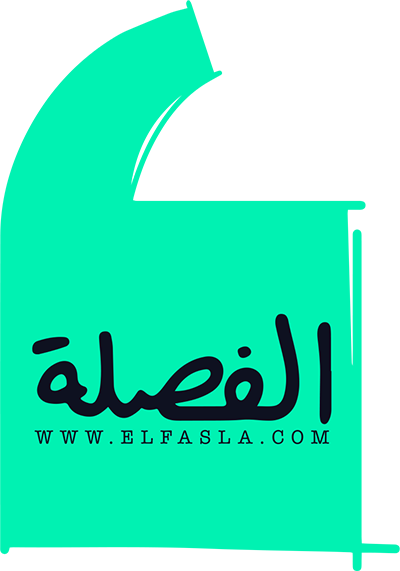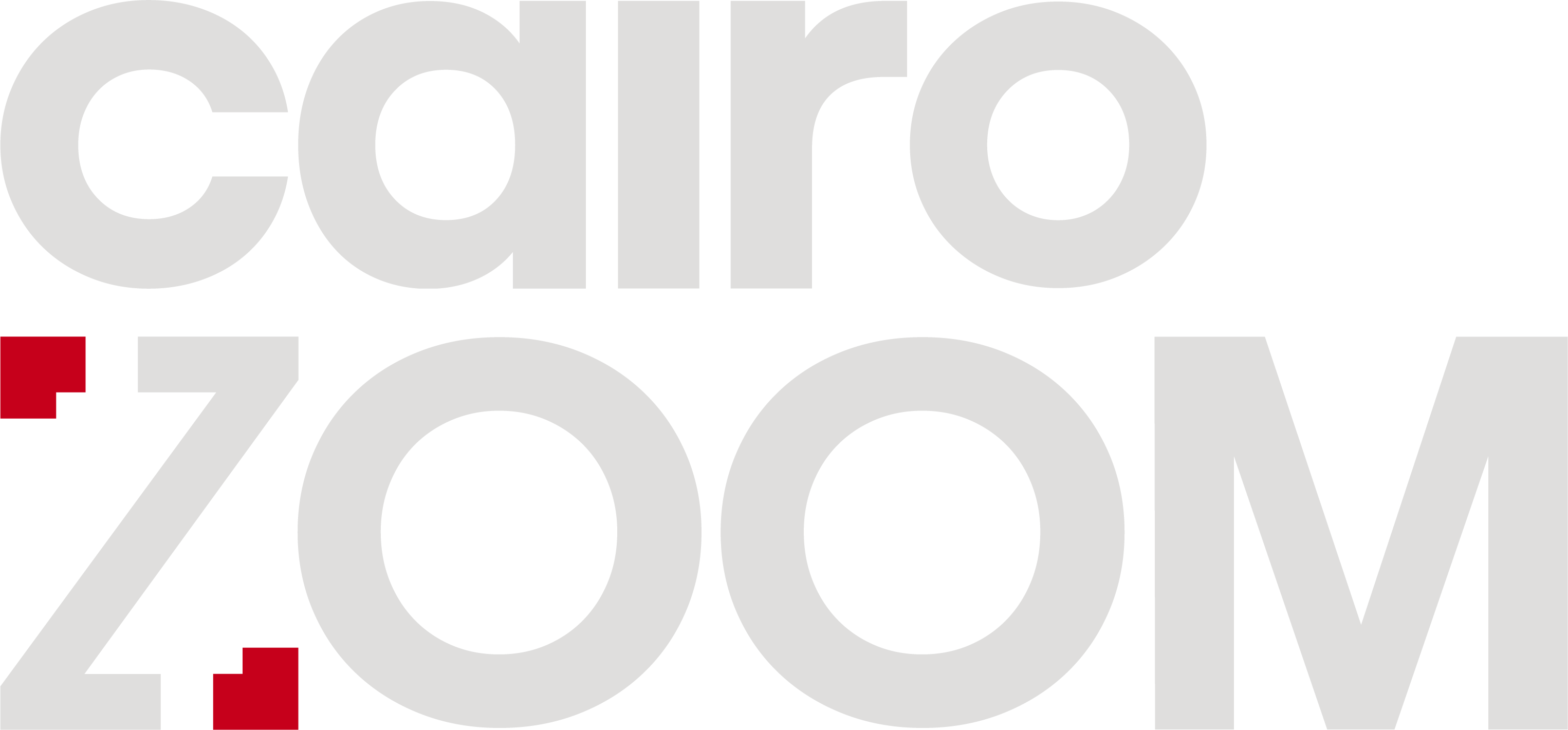Mariem Abutaleb Turns Arabic Script Into an Archive of Emotion
In Mariem Abutaleb’s work, writing outgrows literal meaning. Through rhythm, repetition, and black ink contrast, Arabic script becomes a choreography of feeling.

Before her work filled walls and fabric, it lived in her diary. Between lines written only for herself, Mariem Abutaleb began to notice words drifting away from their literal meaning, becoming instead expressions of emotion through movement and pattern. That discovery marked the beginning of her practice.
“At first, I knew exactly what I was writing,” she recalls. “But once the writing was complete, the text transformed into abstract forms. The words became unreadable to others, and even to me after a while.” From this unreadability emerged a sense of liberation that carried emotion without the need for explanation.
-37d10eeb-5a79-4ab0-a21a-7744a3234858.jpg) Abutaleb studied graphic design at the American University in Cairo, which provided her with a background that shaped her sensitivity to form. Yet her work departs from design’s utilitarian clarity, seeking instead the intuitive and open-ended. Dwelling in the uncertain space between language and image, she allows script to become a canvas for emotion and interpretation. “That unreadability shifted the work away from literal meaning,” she says. “The text began to speak, forming a visual language of its own.”
Her medium is Arabic script. Through rhythm and repetition, the familiar curves of letters turn into abstract gestures that trace emotion through the hand’s movement, which is intuitive yet deliberate, balancing spontaneity with structure. “I write without a specific text in mind,” she explains. “I never return to read what I have written.”
Abutaleb studied graphic design at the American University in Cairo, which provided her with a background that shaped her sensitivity to form. Yet her work departs from design’s utilitarian clarity, seeking instead the intuitive and open-ended. Dwelling in the uncertain space between language and image, she allows script to become a canvas for emotion and interpretation. “That unreadability shifted the work away from literal meaning,” she says. “The text began to speak, forming a visual language of its own.”
Her medium is Arabic script. Through rhythm and repetition, the familiar curves of letters turn into abstract gestures that trace emotion through the hand’s movement, which is intuitive yet deliberate, balancing spontaneity with structure. “I write without a specific text in mind,” she explains. “I never return to read what I have written.”
-42f1f97f-4f00-4b72-9b64-7885c0968aa2.jpg) Black ink on white surfaces is her signature, and over the years, her surfaces have expanded from paper to fabric, each responding differently to her gestures. Fabric introduced a new dimension that moved, absorbed, and resisted. “I fell in love with fabric the first time I tested it,” she says. “Every surface reacts differently to ink and brush. Some absorb it deeply, while others let it flow freely across the surface.”
Black ink on white surfaces is her signature, and over the years, her surfaces have expanded from paper to fabric, each responding differently to her gestures. Fabric introduced a new dimension that moved, absorbed, and resisted. “I fell in love with fabric the first time I tested it,” she says. “Every surface reacts differently to ink and brush. Some absorb it deeply, while others let it flow freely across the surface.”
-3649fe32-e61c-4019-b8aa-111582b1b54e.jpg) Abutaleb’s large-scale pieces invite immersion; the writing surrounds the viewer in motion. “It speaks back; it feels like the loud voice within me finding its form,” she reflects. Smaller works, meanwhile, retain the intimacy of handwriting, while the larger compositions evoke rhythm and breath. Paper remains her quiet space. In her artist books, she returns to the tactility of scale and touch. Pages vary from dense, layered strokes to lighter gestures hovering between silence and speech. “My books focus on the act of reading without readability,” she says. “They invite the viewer to hold, flip, and sense writing as presence rather than meaning.”
Across both mediums -the expansive and the intimate- the act of writing becomes a mapping of inner states. The Arabic script, stripped of semantic function, transforms into an archive of gestures.
Abutaleb’s large-scale pieces invite immersion; the writing surrounds the viewer in motion. “It speaks back; it feels like the loud voice within me finding its form,” she reflects. Smaller works, meanwhile, retain the intimacy of handwriting, while the larger compositions evoke rhythm and breath. Paper remains her quiet space. In her artist books, she returns to the tactility of scale and touch. Pages vary from dense, layered strokes to lighter gestures hovering between silence and speech. “My books focus on the act of reading without readability,” she says. “They invite the viewer to hold, flip, and sense writing as presence rather than meaning.”
Across both mediums -the expansive and the intimate- the act of writing becomes a mapping of inner states. The Arabic script, stripped of semantic function, transforms into an archive of gestures.
-335d6371-ab9a-4942-9d75-e34f69c022fc.jpg) In her recent series 'Tulle & Transparency' (2025), Abutaleb stretched ink across layers of tulle, transforming writing into a suspended presence that moves with light and the viewer’s gaze. Working with tulle pushed her art's sensitivity further. Light, transparent, and fragile, tulle turned writing into something spatial that is hovering and shifting as viewers move around it. “What drew me to tulle was its transparency,” she says. “The script shifts as you move, appearing and disappearing depending on your position.” In these works, writing becomes elusive, forming a choreography of visibility and absence.
In 'Written Fabric Book' (2025), she translated the intimacy of her diary into an object of touch and texture, each hand-bound page carrying its own rhythm of silence and density. While her 'Circular Dialogues' (2025) expanded that rhythm into continuous motion, the script revolves endlessly in a self-contained, meditative gesture. Meanwhile, 'Random Writings' offered a counterpoint: dozens of small-scale works created in moments of pure instinct—an atlas of the hand’s fleeting impulses.
In her recent series 'Tulle & Transparency' (2025), Abutaleb stretched ink across layers of tulle, transforming writing into a suspended presence that moves with light and the viewer’s gaze. Working with tulle pushed her art's sensitivity further. Light, transparent, and fragile, tulle turned writing into something spatial that is hovering and shifting as viewers move around it. “What drew me to tulle was its transparency,” she says. “The script shifts as you move, appearing and disappearing depending on your position.” In these works, writing becomes elusive, forming a choreography of visibility and absence.
In 'Written Fabric Book' (2025), she translated the intimacy of her diary into an object of touch and texture, each hand-bound page carrying its own rhythm of silence and density. While her 'Circular Dialogues' (2025) expanded that rhythm into continuous motion, the script revolves endlessly in a self-contained, meditative gesture. Meanwhile, 'Random Writings' offered a counterpoint: dozens of small-scale works created in moments of pure instinct—an atlas of the hand’s fleeting impulses.
-d7214a3b-da15-4745-b110-0e652a1396a9.jpg) Abutaleb’s parallel explorations on paper sustain her quiet dialogue with writing itself. In 'Book of Diaries' (2022), she documented twenty private reflections, later realizing these pages marked the genesis of her unreadable language. Through 'Transparent Narratives' and 'Unfolding Scripts' (2025), she layered translucent sheets and folded expanses of paper to question how writing behaves in space and how it hides, reveals, or elongates thought. Her 'Miniature Books' condensed that world into fragments small enough to rest in the palm, where intimacy meets scale.
Abutaleb’s parallel explorations on paper sustain her quiet dialogue with writing itself. In 'Book of Diaries' (2022), she documented twenty private reflections, later realizing these pages marked the genesis of her unreadable language. Through 'Transparent Narratives' and 'Unfolding Scripts' (2025), she layered translucent sheets and folded expanses of paper to question how writing behaves in space and how it hides, reveals, or elongates thought. Her 'Miniature Books' condensed that world into fragments small enough to rest in the palm, where intimacy meets scale.-252230ea-64b9-40dd-be26-00f83c96dcb9.jpg) Her practice has steadily reached new audiences, with exhibitions in Cairo, Abu Dhabi, Doha, Jeddah, New York, Berlin, Athens, and Belgium. Whether displayed in white-walled galleries or intimate artist-book fairs, her works invite viewers to feel a language, whether they speak it or not.
Her practice has steadily reached new audiences, with exhibitions in Cairo, Abu Dhabi, Doha, Jeddah, New York, Berlin, Athens, and Belgium. Whether displayed in white-walled galleries or intimate artist-book fairs, her works invite viewers to feel a language, whether they speak it or not.
- Previous Article Dubai Design Week Returns for Its 11th Edition
- Next Article Egyptian Architects Restore a Slaughterhouse in Geneva
Trending This Month
-
Nov 18, 2025



